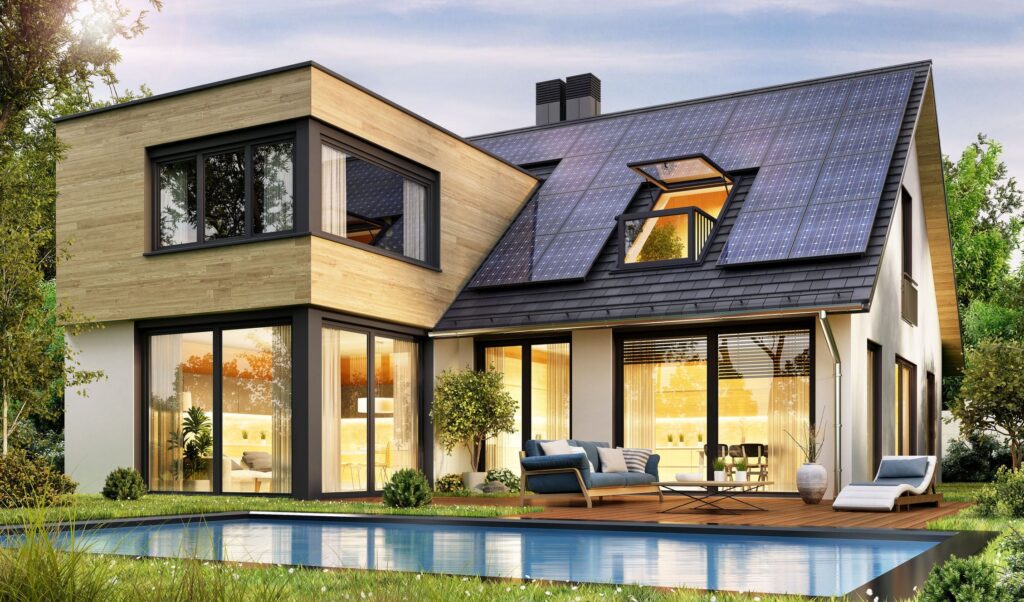In recent years, the concept of eco-friendly home design has gained significant traction, fundamentally transforming the way we approach sustainable living. By integrating environmentally conscious practices into our living spaces, we not only reduce our carbon footprint but also enhance our quality of life. This article delves into how eco-friendly home design is shaping sustainable living, exploring innovative materials, energy-efficient technologies, and design principles that prioritize both functionality and environmental responsibility.
As you read further, you will discover the key elements that define eco-friendly home design, including the use of renewable resources, sustainable building practices, and the importance of energy efficiency. We will also highlight inspiring case studies of homes that exemplify these principles, showcasing how homeowners are making a positive impact on the environment while enjoying the benefits of a healthier living space. Additionally, practical tips will be provided to help you implement eco-friendly practices in your own home.
Join us on this journey towards a more sustainable future as we explore the intersection of design and environmental stewardship. Whether you are a homeowner looking to renovate or simply interested in learning more about sustainable living, this article will equip you with the knowledge and inspiration needed to make informed choices. Read on to uncover the transformative power of eco-friendly home design and how it can lead to a more sustainable lifestyle.
Eco-friendly home design is revolutionizing the way we think about living spaces. As awareness of environmental issues grows, more homeowners are seeking sustainable solutions that minimize their ecological footprint. This article explores various aspects of eco-friendly home design and its impact on sustainable living.
Sustainable Materials in Home Construction
The choice of materials is crucial in eco-friendly home design. Sustainable materials, such as bamboo, reclaimed wood, and recycled metal, not only reduce environmental impact but also enhance the aesthetic appeal of homes. These materials are often sourced locally, which further decreases transportation emissions and supports local economies.
Using sustainable materials can also improve indoor air quality. Many eco-friendly materials are free from harmful chemicals and toxins, making them safer for occupants. As a result, homeowners can enjoy a healthier living environment while contributing to sustainability efforts.
Energy Efficiency and Renewable Energy Sources
Energy efficiency is a cornerstone of eco-friendly home design. Incorporating energy-efficient appliances, insulation, and windows can significantly reduce energy consumption. Additionally, many homeowners are turning to renewable energy sources, such as solar panels and wind turbines, to power their homes sustainably.
By utilizing renewable energy, homeowners can decrease their reliance on fossil fuels, leading to lower greenhouse gas emissions. This shift not only benefits the environment but can also result in substantial savings on energy bills over time.
Water Conservation Techniques
Water conservation is another critical aspect of sustainable living. Eco-friendly home designs often include features such as rainwater harvesting systems, low-flow fixtures, and drought-resistant landscaping. These techniques help reduce water usage and promote responsible consumption.
Implementing water-saving technologies not only conserves a precious resource but also lowers utility costs for homeowners. By adopting these practices, individuals can contribute to a more sustainable future while enjoying the benefits of reduced water bills.
Indoor Air Quality and Natural Ventilation
Indoor air quality is essential for a healthy living environment. Eco-friendly home designs prioritize natural ventilation and the use of non-toxic materials to improve air quality. Features such as strategically placed windows and ventilation systems allow for fresh air circulation, reducing the need for artificial heating and cooling.
By enhancing indoor air quality, homeowners can create a more comfortable and healthier living space. This focus on natural ventilation also aligns with sustainable living principles, as it reduces energy consumption and promotes a connection with the outdoors.
Smart Home Technology for Sustainability
Smart home technology plays a significant role in eco-friendly home design. Devices such as smart thermostats, energy monitors, and automated lighting systems help homeowners manage their energy consumption more effectively. These technologies enable users to track their usage patterns and make informed decisions about energy efficiency.
By integrating smart technology into their homes, individuals can optimize their energy use, reduce waste, and contribute to a more sustainable lifestyle. This innovative approach to home design aligns with the growing trend of eco-conscious living.
Sustainable Landscaping Practices
Sustainable landscaping is an essential component of eco-friendly home design. Homeowners are increasingly adopting practices such as xeriscaping, which involves using drought-resistant plants and minimizing water usage. This approach not only conserves water but also enhances biodiversity by creating habitats for local wildlife.
Incorporating native plants into landscaping designs can further promote sustainability. Native plants require less maintenance and are better adapted to local climates, reducing the need for chemical fertilizers and pesticides. This practice supports a healthier ecosystem while providing an attractive outdoor space.
The Role of Community in Sustainable Living
Community plays a vital role in promoting sustainable living through eco-friendly home design. Neighborhoods that prioritize sustainability often encourage collaboration among residents, leading to shared resources and knowledge. Community gardens, tool-sharing programs, and local workshops can foster a sense of belonging while promoting eco-conscious practices.
By engaging with their communities, homeowners can amplify their sustainability efforts and inspire others to adopt eco-friendly practices. This collective approach to sustainable living can lead to significant positive impacts on the environment and local ecosystems.
The Future of Eco-friendly Home Design
The future of eco-friendly home design looks promising as technology and innovation continue to evolve. Emerging trends such as biophilic design, which emphasizes the connection between nature and the built environment, are gaining traction. This approach not only enhances aesthetics but also promotes well-being and sustainability.
As more individuals recognize the importance of sustainable living, the demand for eco-friendly homes will likely increase. This shift presents opportunities for architects, builders, and homeowners to collaborate in creating innovative designs that prioritize environmental responsibility and enhance quality of life.
| Aspect | Description |
|---|---|
| Definition | Eco-friendly home design focuses on creating living spaces that minimize environmental impact and promote sustainability. |
| Materials | Utilization of sustainable materials such as bamboo, recycled metal, and reclaimed wood to reduce resource depletion. |
| Energy Efficiency | Incorporation of energy-efficient appliances, solar panels, and proper insulation to lower energy consumption. |
| Water Conservation | Implementation of rainwater harvesting systems and low-flow fixtures to reduce water usage. |
| Indoor Air Quality | Use of non-toxic paints and materials to improve indoor air quality and reduce health risks. |
| Landscaping | Designing gardens with native plants that require less water and maintenance, promoting biodiversity. |
| Smart Technology | Integration of smart home technology to monitor and optimize energy and water usage. |
| Community Impact | Encouraging sustainable practices within communities to foster a collective approach to environmental stewardship. |
| Future Trends | Emerging trends include biophilic design, which connects occupants with nature, and the use of modular construction for efficiency. |



